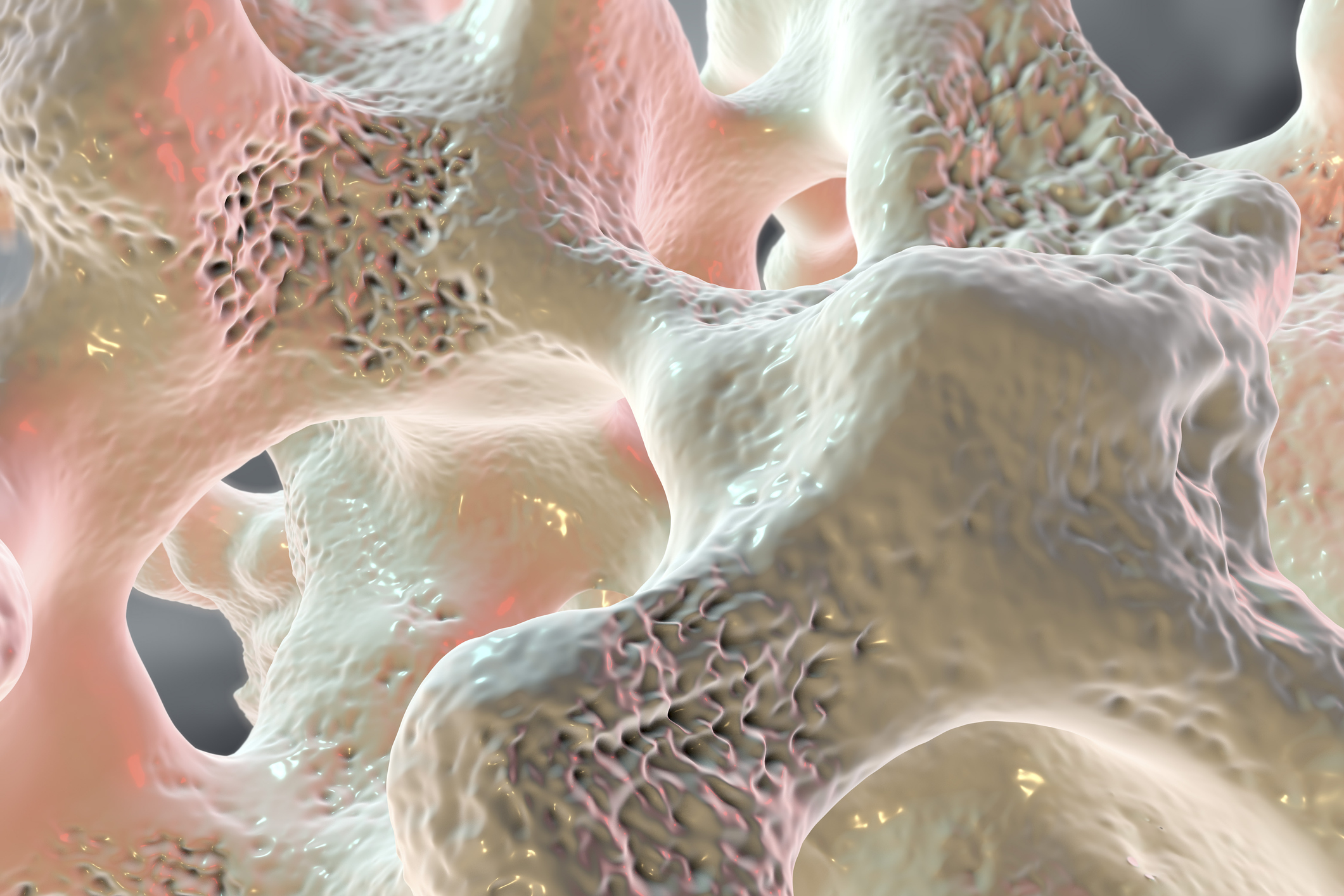Osteoporosis is a bone disease that results in a thinning of the bones. It occurs when the body makes too little bone or when the bones lose density and mass. In osteoporosis, the bones weaken, become brittle, and are more likely to break. The disease can limit general mobility and may lead to a stooped posture (kyphosis). Bone fractures are a serious consequence of osteoporosis.
Osteoporosis symptoms
People with osteoporosis often do not realize that they have a problem. It is often referred to as a silent disease, because symptoms are not initially apparent. Early stages of the disease are not easily detectable, and there is usually no pain. One of the first indications of osteoporosis is often a broken bone. Later stages of osteoporosis include symptoms such as loss of height, stooped posture, back or neck pain, and bone fractures. Compression fractures of the vertebrae can cause intense neck and back pain as the nerves coming out from the spinal cord become pinched.
Risk factors
Osteoporosis becomes more common as people age. Both men and women can develop the disease, but it occurs more often in post-menopausal women due to reduced estrogen levels. Women of Caucasian and Asian ethnicity have a higher risk of osteoporosis, as do people with a small body frame. Having a family history of the disease also increases a person’s risk. Those with certain medical conditions including thyroid problems, Celiac disease, lupus, rheumatoid arthritis, kidney or liver disease, and some types of cancer have an increased risk for osteoporosis. Long term use of steroids and medications taken to treat seizures, gastric reflux, and cancer are also associated with the development of osteoporosis.
Spinal fractures and treatment
Bone fractures are a common complication of osteoporosis. The elderly, who have increased fall risk, are particularly vulnerable. However, spinal compression fractures may occur even if there have been no falls. The vertebrae can weaken and develop small fractures that may cause stooped posture or considerable back pain that makes it difficult to walk, stand, sit, bend, lift, or carry out routine tasks.
Surgery is sometimes necessary to treat spinal compression fractures. Patients would be referred to a neurosurgeon for evaluation. There are two types of surgeries that may be recommended- vertebroplasty or kyphoplasty. The procedures work best if performed soon after the fracture is diagnosed. During vertebroplasty a needle is used to inject a bone cement mixture into the fracture. In kyphoplasty, a small balloon is inflated in the fracture and then filled with a bone cement mixture. Both of these surgeries are considered minimally invasive procedures. Each one can provide rapid improvement in pain and physical functioning. Some patients may be able to go home the same day as their procedure. Other patients will stay overnight in the hospital for monitoring.
The surgeons at Atlanta Brain and Spine Care have considerable experience in the minimally invasive techniques of vertebroplasty and kyphoplasty. Outcomes are excellent, and recovery times are shorter than traditional surgical methods.


